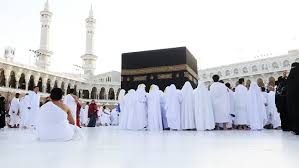India, a land rich in spiritual history, is home to many significant Buddhist monasteries in India, each steeped in history, culture, and deep spiritual teachings. These monasteries, scattered across the country, are more than just places of worship; they are sanctuaries of peace, learning, and meditation. From the snowy heights of the Himalayas to the serene plains of Bodh Gaya, Buddhist monasteries in India offer a unique glimpse into the life of the Buddha and the Buddhist traditions that continue to thrive to this day.

A Glimpse Into the Tranquil World of Buddhist Monasteries
Buddhist monasteries in India are not just architectural marvels; they embody the teachings of the Buddha, offering a space for contemplation, prayer, and reflection. The roots of Buddhism in India trace back to the teachings of Siddhartha Gautama, who attained enlightenment in Bodh Gaya. Over the centuries, monasteries have become important centers for Buddhist practices and have attracted seekers from around the world.
When visiting Buddhist monasteries in India, one immediately feels the stillness and tranquility of the environment. The monasteries, with their simple yet profound architecture, often feature lush green surroundings, prayer flags fluttering in the wind, and the rhythmic sound of prayers and bells. These monasteries serve not only as places of religious practice but also as sanctuaries for meditation and spiritual growth.
Bodh Gaya: The Spiritual Heart of India
At the forefront of Buddhist monasteries in India stands Bodh Gaya, where the Buddha achieved enlightenment under the famous Bodhi tree. Bodh Gaya is considered the holiest site in Buddhism, attracting pilgrims and tourists alike. The Mahabodhi Temple, a UNESCO World Heritage Site, is the focal point of this sacred town. Pilgrims gather here to meditate, pay respects, and commemorate the Buddha’s awakening.
Bodh Gaya is home to numerous Buddhist monasteries in India, representing various Buddhist traditions, including Tibetan, Thai, Japanese, and Burmese. Each monastery in Bodh Gaya has its own unique style and practices, reflecting the diversity within Buddhism. The Tibetan Monastery, for instance, stands out with its traditional Tibetan architecture, while the Japanese Monastery features a peaceful Zen garden, creating a harmonious blend of beauty and spirituality.
Sarnath: The Place of Buddha’s First Sermon
Another prominent location for Buddhist monasteries in India is Sarnath, located near Varanasi. This sacred site marks the place where the Buddha delivered his first sermon to his first five disciples after attaining enlightenment. The remains of ancient monasteries here attract thousands of Buddhist devotees who come to walk in the footsteps of the Buddha.
The Dhamek Stupa, the main monument in Sarnath, is surrounded by several monasteries that offer a calm and meditative atmosphere. These monasteries, some of which date back to the ancient period, offer insights into the evolution of Buddhist architecture and teachings. Visitors often spend time in quiet meditation at the Sarnath monasteries, where the teachings of the Buddha on the Four Noble Truths and the Eightfold Path come alive.
Dharamsala: A Refuge for Tibetan Buddhism
Dharamsala, located in Himachal Pradesh, is another significant destination for those exploring Buddhist monasteries in India. Known as the home of the Dalai Lama, Dharamsala has become a refuge for Tibetan Buddhism, especially after the Tibetan diaspora sought asylum in India in the 1950s. The Tibetan Monastery here, also known as Tsuglagkhang, is not just a place of worship but also a cultural center that promotes Tibetan Buddhist philosophy.
Dharamsala’s monasteries are vibrant centers for learning and spirituality. The Tibetan Buddhist Institute in the region offers courses on Buddhist philosophy, meditation, and Tibetan culture. The serene environment of the monasteries, surrounded by the majestic Himalayas, is ideal for those seeking inner peace and spiritual insight. Here, you can immerse yourself in Tibetan Buddhist rituals, participate in prayers, or simply meditate in solitude, experiencing the deep connection between nature and spirituality.
Leh and Ladakh: The Monastic Heart of Buddhism in the Himalayas
In the northernmost part of India, the regions of Leh and Ladakh are home to some of the most stunning Buddhist monasteries in India. Surrounded by snow-capped mountains and rugged landscapes, these monasteries are perched on high cliffs and hilltops, offering breathtaking views and a sense of detachment from the bustling world below. The monasteries of Leh, like Hemis, Thiksey, and Alchi, are vibrant with traditional murals, stupas, and prayer wheels, all reflecting the rich Buddhist heritage of the region.
The monasteries in Ladakh are not only visually stunning but also play a crucial role in preserving Buddhist culture in the region. Many of these monasteries host annual festivals that celebrate Buddhist teachings through dance, music, and rituals, drawing visitors from around the world.
The Role of Buddhist Monasteries in India’s Spiritual Landscape
The Buddhist monasteries in India are much more than just tourist attractions. They are the custodians of one of the world’s oldest spiritual traditions, providing a space for reflection, meditation, and learning. The monasteries not only serve the spiritual needs of the monks but also act as hubs for the larger Buddhist community. They offer courses in Buddhist philosophy, meditation retreats, and opportunities for personal transformation.
These monasteries also play a crucial role in preserving Buddhist art, culture, and teachings, providing a valuable resource for both local and international Buddhist practitioners. The monks who live and work in these monasteries are dedicated to spreading the Buddha’s teachings, helping others to achieve enlightenment and inner peace.
Conclusion: A Journey Through Peace and Wisdom
Visiting Buddhist monasteries in India offers more than just a chance to see ancient buildings and relics. It’s an opportunity to connect with the profound wisdom and serenity of the Buddha’s teachings. Whether you’re exploring the sacred grounds of Bodh Gaya, participating in a retreat in Dharamsala, or simply meditating in the peaceful monasteries of Ladakh, each experience brings you closer to understanding the universal truths of compassion, mindfulness, and peace.
For those seeking spiritual growth, personal reflection, or simply a deeper connection to India’s rich spiritual heritage, Buddhist monasteries in India provide the perfect setting. These peaceful sanctuaries offer a timeless opportunity to experience the calm, clarity, and compassion that the Buddha himself embodied.

















